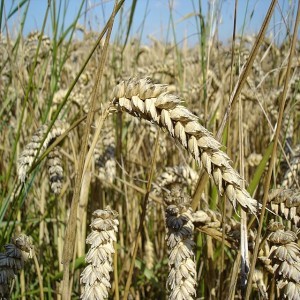The Missing Kingdom: Why Fungi Must Be Central to Conservation Strategy
28 December 2025
Weather hits Egypt’s bid for wheat security
Published online 24 July 2024
Despite an overall increase, wheat productivity and water requirements have been negatively affected by climate fluctuations over the past three decades

While Egypt has increased its wheat productivity over the past three decades in hopes of achieving self-sufficiency, rising temperatures and unreliable rainfall are undermining plans for this vital crop, according to a study published by the Journal of Agriculture and Food Research.
“Wheat self-sufficiency strategies in Egypt and similar climates should start to incorporate air temperature and GDD [days required for the crop to mature] considerations,” the authors wrote.
Egypt hopes to increase its self-sufficiency from 47% in 2021 to 70% by 2030.
The study examined climate and crop data from 1987 to 2019 to analyse the effects of climate on wheat growth and water needs across different regions in Egypt, both around and outside the Nile valley.
The results revealed that wheat productivity has generally increased by 0.56 to 0.61 megagrams per hectare over the past three decades due to the national strategy. Maximum temperatures, however, have risen by between 0.24°C and 0.35°C per decade, while minimum temperatures increased between 0.4°C and 0.43°C, which generally have a significant impact on wheat productivity and water needs. Water demands increased over the past three decades by a rate of 12% in lower Egypt, 15% in middle Egypt and 18% outside the Nile valley.
Increased productivity was achieved by using high-yielding wheat varieties and providing subsidies and free machinery to encourage farmers. The increasing temperatures, however, have resulted in significant increases in growing degree days (GDDs), ranging between 84.48 to 92.5 days across the period studied. In upper Egypt, for instance, the GDD was 829 higher than optimum rates. This means that short-season wheat varieties in that area may be a better option to mitigate for climate change.
The Nile valley crops were more affected by maximum temperatures fluctuations, while lower Egypt’s crops were more affected by minimum temperatures fluctuations during critical periods of the crop growing season. In lower Egypt, the third stage of wheat production, in February, was shown to be the most vulnerable to changes in maximum temperatures, while the last two stages, in April, were extremely sensitive to changes in minimum temperatures. By contrast, outside the Nile valley, the last two stages of wheat crop as well as the initial stage, which takes place in December, were affected by changes in maximum temperatures.
Wheat in middle Egypt showed resilience in facing climate change and maintaining its productivity rate. The highest average wheat productivity in middle Egypt was 6.23 megagrams per hectare while the rate was 6.14 in lower Egypt and 5.89 in upper Egypt.
Increasing temperatures across all study areas led to greater evapotranspiration (evaporation of water and its emission from plant surfaces) with rainfall remaining low and an unreliable as a source of irrigation, water requirements grew significantly. The accumulated monthly rainfall varied between 0 and 50.44 millimeters in the last 30 years, which shows no significant change across the decades, except for middle Egypt which saw an increase of 0.28 millimeters in the period studied. Evapotranspiration on the other hand increased by an average of between 0.01 to 0.02 millimeters per decade. This led to a 12% to 18% percent rise in water requirements in the past three decades, depending on the zone, further exacerbating the already pressing issue of water scarcity, particularly in arid zones like Egypt.
Maha Elbana, a researcher participating in the study from the Department of Soil and Water Sciences at Beni-Suef University, in Egypt, stresses the need for taking all climatic factors into consideration while setting agricultural strategies.
Elbana and her colleagues also recommend expanding wheat cultivation in regions other than upper Egypt, including middle Egypt and the new regions outside the Nile valley which have shown resilience to climate change.
The researchers also recommend developing and using short-season, disease and drought-resistant wheat varieties in upper Egypt to maximize the benefit from increased temperatures and crop growth, and to reduce water consumption.
Link to original article: https://www.natureasia.com/ar/nmiddleeast/article/10.1038/nmiddleeast.2024.197
doi:10.1038/nmiddleeast.2024.233
Stay connected: